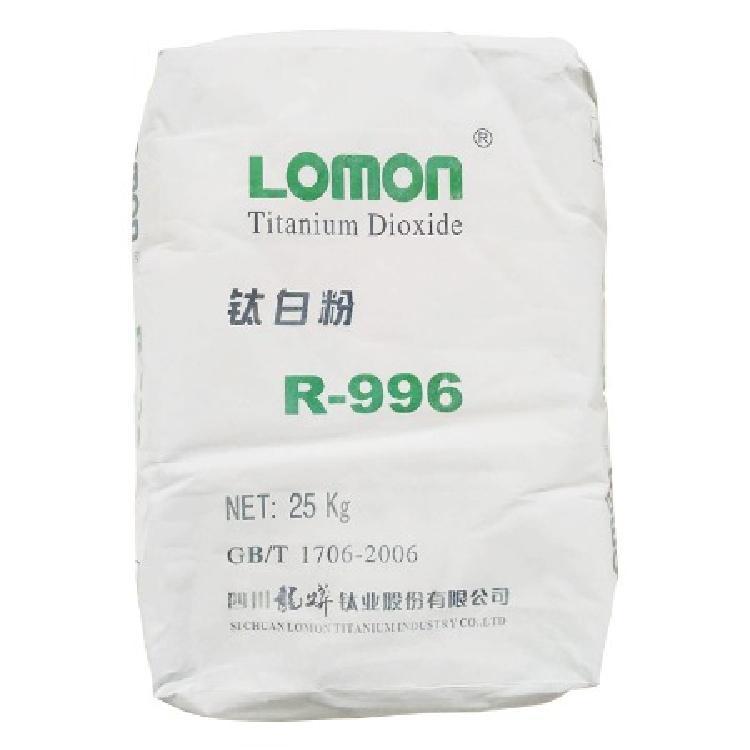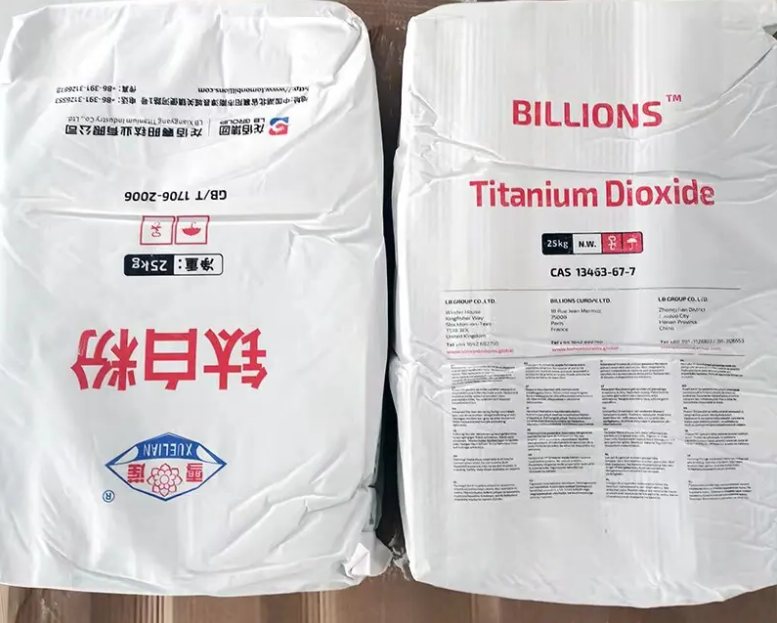
កក្កដា . 04, 2025 11:53 Back to list
High Purity Chlorination Process Titanium Dioxide Manufacturer & Wholesale Supply from China
- Understanding the Chlorination Process Titanium Dioxide: Introduction and Market Overview
- Technological Advantages and Key Benefits of Chlorination Process
- Comparing Manufacturers: China vs. Global Producers
- Tailored Solutions for Diverse Industrial Requirements
- Wholesale Chlorination Process Titanium Dioxide: Supply Chain and Quality Control
- Application Cases and Data-Driven Impacts
- Future Outlook of Chlorination Process Titanium Dioxide Market

(chlorination process titanium dioxide)
Understanding the Chlorination Process Titanium Dioxide: Introduction and Market Overview
The chlorination process titanium dioxide
is a cornerstone in modern pigment manufacturing, leveraged for its exceptional brightness and opacity in various applications from paints to plastics. The global market for titanium dioxide reached over 6.5 million metric tons in 2023, with the chlorination process contributing more than 60% of the output due to its efficiency and product purity. This advancement over traditional sulfate processes appeals strongly to high-performance sectors seeking optimal whiteness and durability.
As a result, wholesale chlorination process titanium dioxide is increasingly in demand worldwide, not only in major consumption regions like North America and Europe, but also throughout Asia-Pacific, particularly within China’s rapidly growing market. The evolution of manufacturing techniques and stricter environmental controls have further catalyzed the adoption of chlorination-based production, ensuring manufacturers adapt to both technical and regulatory trends.
Technological Advantages and Key Benefits of Chlorination Process
The chlorination process is celebrated for its unparalleled purity and high pigment grade production. Instead of using sulfuric acid (as in the sulfate process), chlorination employs chlorine gas to convert high-titania feedstock, such as rutile, into titanium tetrachloride, which is further oxidized to yield TiO2. This closed-loop method not only minimizes waste but also facilitates resource recovery.
Key benefits include:
- Superior Whiteness and Opacity: Ideal for premium paint and coatings markets.
- Lower Impurities: Resulting product features lower levels of iron and other contaminants.
- Enhanced Environmental Compliance: Recycles chlorine and reduces waste streams.
- Higher Throughput: Chlorination reactors process feedstock rapidly, improving cost-effectiveness.
Comparing Manufacturers: China vs. Global Producers
China has emerged as a significant force among chlorination process titanium dioxide manufacturers, competing with globally established suppliers in Europe and the US. As production scales and environmental controls tighten worldwide, the choice of supplier becomes increasingly strategic. The following table illustrates a comparison of primary manufacturing criteria:
| Criteria | China | Europe/US |
|---|---|---|
| Annual Production Capacity (KT) | 2,800 | 2,400 |
| Average Whiteness (%) | 98.7 | 98.9 |
| Purity (Rutile %) | 98.5 | 98.7 |
| Customizability | High | Medium |
| Average Price (USD/Ton) | 2,400 | 2,950 |
| Logistics Lead Time (Days) | 30-45 | 20-30 |
Chinese manufacturers have substantially improved their quality controls, making them competitive global players. Additionally, the growing capability for custom formulation and large-scale production has attracted OEMs and wholesalers seeking a balance between quality, speed, and price.
Tailored Solutions for Diverse Industrial Requirements
Customization is a defining trait of progressive chlorination process titanium dioxide suppliers. For industries such as polymers, automotive coatings, and papermaking, exact pigment attributes—such as particle size distribution, surface treatment, and organic/inorganic coatings—are meticulously engineered.
Leading manufacturers collaborate closely with clients to achieve optimal dispersion in plastics, enhanced UV resistance for exterior paints, or customized rheology for specialty inks. This flexibility ensures end uses benefit from both functionality and regulatory compliance, whether operating in stringent EU jurisdictions or in the US's VOC-restricted environments.
Comprehensive in-house laboratories and pilot-scale capabilities allow manufacturers to simulate end-use scenarios and deliver robust technical support. In 2023, over 38% of new titanium dioxide projects involved some level of custom modification, underlining the market's trend towards personalized solutions.
Wholesale Chlorination Process Titanium Dioxide: Supply Chain and Quality Control
As the demand for wholesale chlorination process titanium dioxide increases, robust supply chain management and rigorous quality control are non-negotiable. Modern suppliers implement digital traceability systems, enabling batch-level tracking and real-time QA/QC data sharing.
Especially in the context of large-volume procurement for paint and plastics manufacturers, consistency across batches is paramount. Typically, leading suppliers perform:
- ISO 9001/14001 certified manufacturing procedures
- Automated process monitoring for purity and particle size consistency
- Comprehensive lab analysis before shipment
Application Cases and Data-Driven Impacts
Chlorination process titanium dioxide is extensively utilized across industries requiring high-end pigment performance. Notably, automotive OEM paints have seen a 15% cost reduction and 20% efficiency gains by adopting this grade, thanks to its superior hiding power and faster drying properties.
In the plastics sector, the integration of high-purity TiO2 enables products to achieve up to 30% longer UV resistance, crucial for consumer goods exposed to sunlight. Meanwhile, the paper industry leverages it for achieving brightness levels exceeding 96%, critical for premium coated paper grades. The following table illustrates some striking industry-specific impacts:
| Sector | Traditional Pigment | Chlorination TiO2 | Improvement (%) |
|---|---|---|---|
| Automotive Paint | Whiteness: 95% | Whiteness: 98.7% | +3.7 |
| Plastics (Outdoor) | UV Stability: 5 Years | UV Stability: 6.5 Years | +30 |
| Paper (Coated) | Brightness: 92% | Brightness: 96.2% | +4.6 |
Data consistently show that migrating to chlorination process titanium dioxide improves both performance and cost-effectiveness, substantiating its adoption in high-value market segments.
Future Outlook of Chlorination Process Titanium Dioxide Market
Looking ahead, the chlorination process titanium dioxide market is poised for sustained growth. Innovations such as green chlorination, focusing on alternative feedstocks and reduced carbon footprints, are redefining industry standards. By 2028, the global market is projected to reach USD 28.6 billion, fueled by sectors demanding ever-higher pigment specifications and sustainability profiles.
Emerging economies and increased investment in infrastructure across Asia and Africa are projected to drive wholesale expansions, with China playing a pivotal role as both consumer and leading manufacturer. Manufacturers are responding with ever-greater R&D investments, agile manufacturing, and localized technology support to anticipate shifting regulatory and performance requirements.
The chlorination process titanium dioxide is thus set not only to meet conventional industrial demands but also to underpin next-generation materials, from eco-friendly packaging to advanced composites, reinforcing its critical value in the global supply chain.

(chlorination process titanium dioxide)
FAQS on chlorination process titanium dioxide
Q: What is the chlorination process titanium dioxide?
A: Chlorination process titanium dioxide is a high-purity white pigment made by converting titanium ore into titanium tetrachloride, then further refining it. This process produces TiO2 with excellent brightness and hiding power. It is widely used in paints, plastics, coatings, and papers.Q: How can I find a wholesale chlorination process titanium dioxide supplier?
A: You can search for wholesale chlorination process titanium dioxide suppliers through online B2B platforms or industry trade directories. Many suppliers offer bulk pricing for large orders. Ensure the supplier meets your quality and certification requirements.Q: What advantages do manufacturers using the chlorination process for titanium dioxide offer?
A: Manufacturers using the chlorination process produce titanium dioxide with higher purity and consistent particle size. This results in better product quality for applications requiring high whiteness. It also generally has lower impurity levels than sulfate process TiO2.Q: Why is China a leading source for chlorination process titanium dioxide?
A: China is a major producer due to advanced manufacturing capabilities and abundant raw materials. Many Chinese companies offer competitive pricing and a variety of TiO2 grades. They serve both domestic and international markets efficiently.Q: What are the typical applications for wholesale chlorination process titanium dioxide?
A: Wholesale chlorination process titanium dioxide is used in industries like paint, plastics, coatings, inks, and paper. Its high brightness and opacity make it ideal for coloring and enhancing product appearance. It is also used in cosmetics and certain food packaging.-
High-Quality Titanium Dioxide R605 Powder Coating Multi-Purpose Product – Reliable China Supplier
NewsJul.04,2025
-
High Purity Chlorination Process Titanium Dioxide Manufacturer & Wholesale Supply from China
NewsJul.04,2025
-
China Lithopone in China Supplier – High Quality Lithopone ZnS 30% Powder for Wholesale
NewsJun.10,2025
-
Top China Titanium Dioxide Company – Premium TiO2 Powder Supplier & Manufacturer
NewsJun.10,2025
-
Fast Shipping 99% Pure TiO2 Powder CAS 13463-67-7 Bulk Wholesale
NewsJun.10,2025
-
Top China Titanium Dioxide Manufacturers High-Purity R996 & Anatase
NewsJun.10,2025
